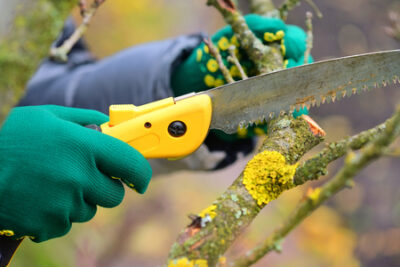
Pruning and trimming are vital aspects of tree care, contributing to the overall health, appearance, and longevity of your trees. While pruning is often associated with the dormant season, it’s important to understand that certain trees can benefit from selective pruning during the summer months as well.
Understand the Purpose of Summer Pruning
Pruning during the summer serves different purposes compared to pruning in the dormant season. Key objectives of summer pruning include:
- Removing dead, diseased, or damaged branches.
- Shaping the tree’s growth to improve aesthetics and maintain desired form.
- Controlling the size of the tree or managing its canopy for light penetration and airflow.
Timing is Key
When it comes to summer pruning, timing is crucial. Consider the following guidelines:
- Early summer pruning: Aim to complete major pruning tasks before mid-summer, allowing the tree ample time to heal wounds before winter.
- Avoid pruning during hot, dry periods: Pruning during extreme heat and drought can put additional stress on trees. Choose cooler days or early morning hours for pruning when temperatures are more moderate.
Selective Branch Removal
When pruning in summer, focus on selective branch removal to achieve specific objectives:
- Remove dead, diseased, or damaged branches: These can be pruned at any time of the year to prevent the spread of pests and diseases.
- Prune for shape and structure: Remove crossing branches, watersprouts, or suckers to maintain a balanced canopy and proper branch spacing.
- Raise the canopy: Trim lower branches to provide clearance for pedestrians, vehicles, or structures, as needed.
Proper Pruning Techniques
Adhering to proper pruning techniques is essential for maintaining tree health and minimizing the risk of damage:
- Use sharp, clean pruning tools to make precise cuts and minimize stress on the tree.
- Make cuts just outside the branch collar or branch bark ridge to facilitate proper healing.
- Avoid flush cuts or leaving stubs, as they can hinder the tree’s ability to compartmentalize wounds.
- Consult an Arborist for Complex Pruning Needs: For more extensive pruning or if you’re unsure about specific pruning requirements, it’s advisable to consult a professional arborist. They have the expertise to assess tree health, identify potential risks, and provide specialized pruning techniques that promote healthy growth.
- Monitor for Signs of Stress: After pruning, closely monitor your trees for signs of stress or disease. Provide proper watering, mulching, and fertilization to support their recovery and growth.
Pruning and trimming trees in the summer can contribute to their overall health, appearance, and structural integrity. By following best practices for summer pruning, such as selective branch removal, proper timing, and pruning techniques, you can enhance the growth and vitality of your trees. Remember, if you have complex pruning needs or require guidance, consulting a professional arborist is always recommended. With proper care and attention, your trees will thrive, providing beauty, shade, and environmental benefits for years to come.
Contact Cold Stream Farm at (231) 464-5809 today or visit us online for more information about our wholesale tree and shrub farm in Michigan.
